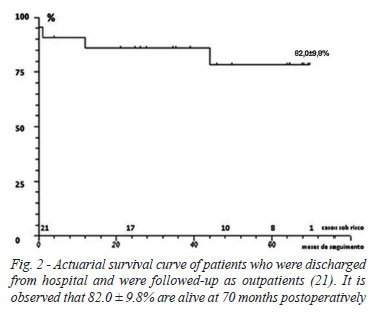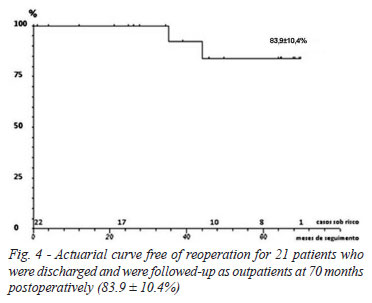OBJECTIVE: To evaluate clinically and by Doppler Echocardiography 22 patients submitted to mitral valve repair after valvular regurgitation using standardized bovine pericardium chordae. METHODS: The patients had degenerative mitral regurgitation. Fourteen (63.6%) patients were male and the age ranged from 19 to 76 years (mean 56.8 ± 13.8 years). The strings of bovine pericardium treated with glutaraldehyde were reinforced in its transverse ends forming a trapezoid. RESULTS: One patient (4.5%) died in the immediate postoperative period with in low cardiac output syndrome and three (13.6%) in the late postoperative period. One patient (4.5%) was reoperated. The actuarial curves for survival free of death from cardiovascular causes and free from reoperation for patients who left the hospital (21), showed rates of 82.0 ± 9.8% and 83.9 ± 10.4% at 70 months postoperatively, respectively. Seventeen patients (77.3%) are alive with native valves. Of the 17 patients alive with native valves 16 (94.1%) were in functional class I. The Doppler Echocardiography postoperatively (mean 41 months, 4-70 months), showed no mitral regurgitation in 11 (64.7%) patients and mild regurgitation in five (29.4%). CONCLUSION: The technique of standard cords of bovine pericardium implantation to replace chordae tendineae of the mitral valve in patients with degenerative mitral regurgitation showed satisfactory results.
Mitral valve insufficiency; Papillary muscles; Chordae Tendineae; Pericardium








